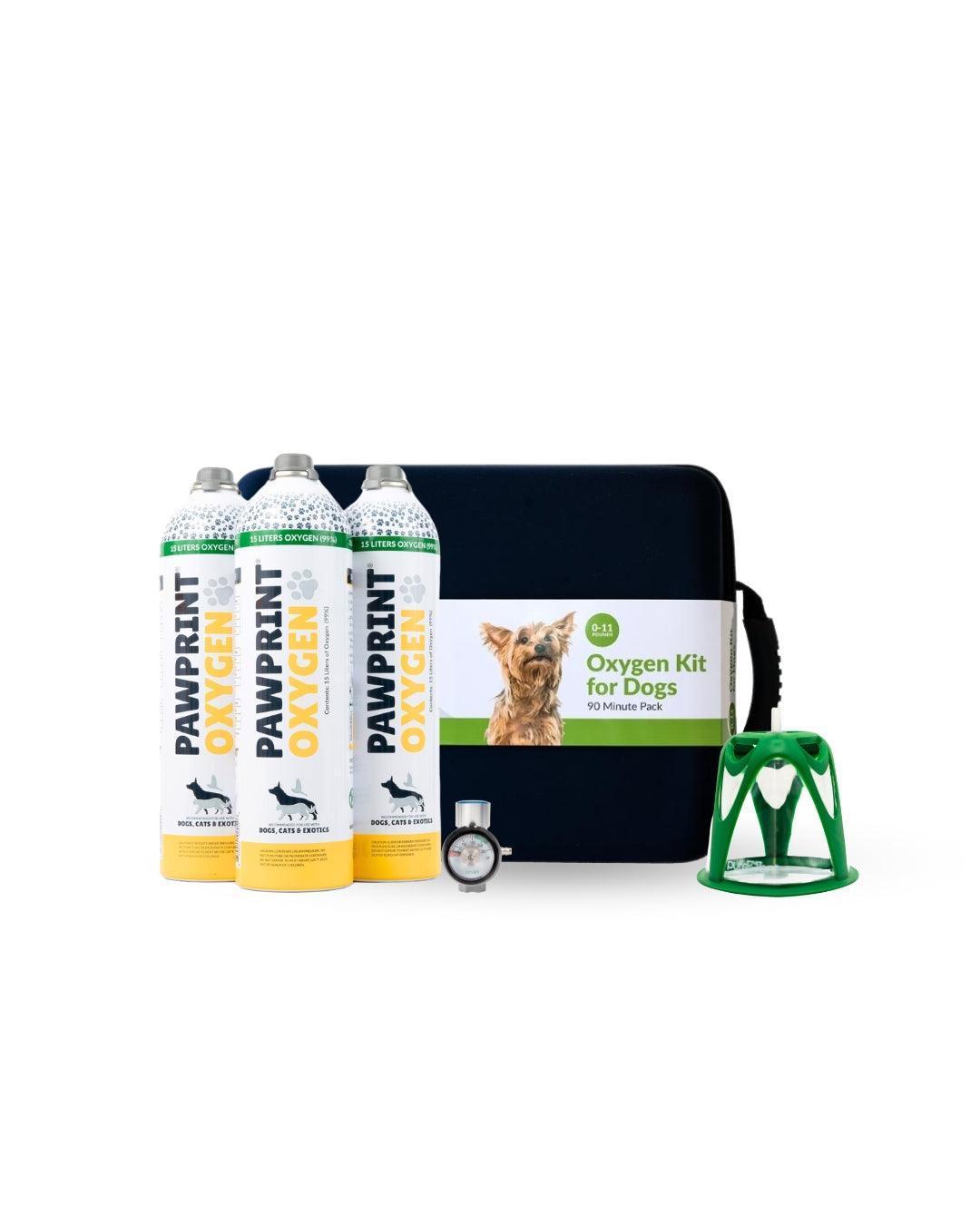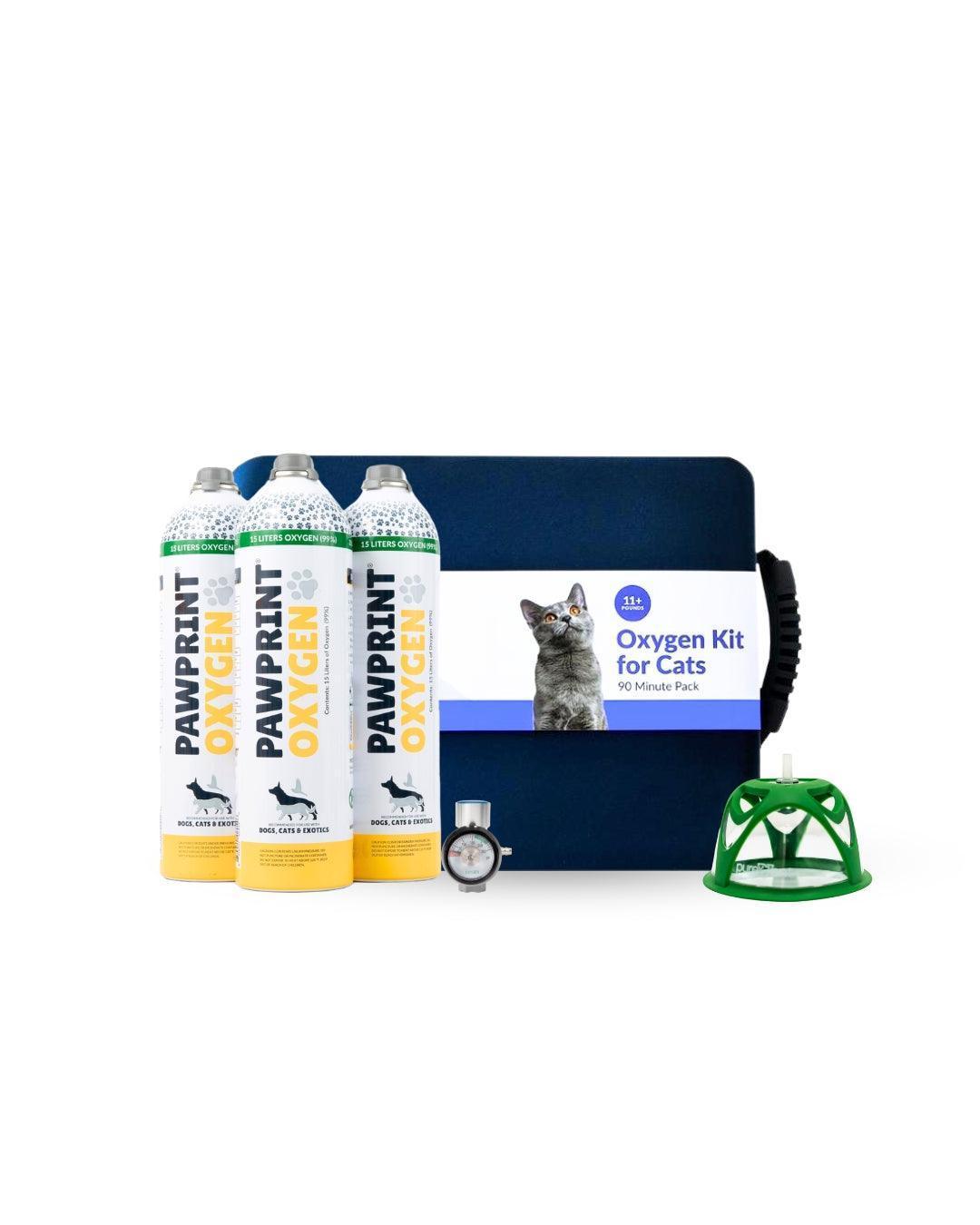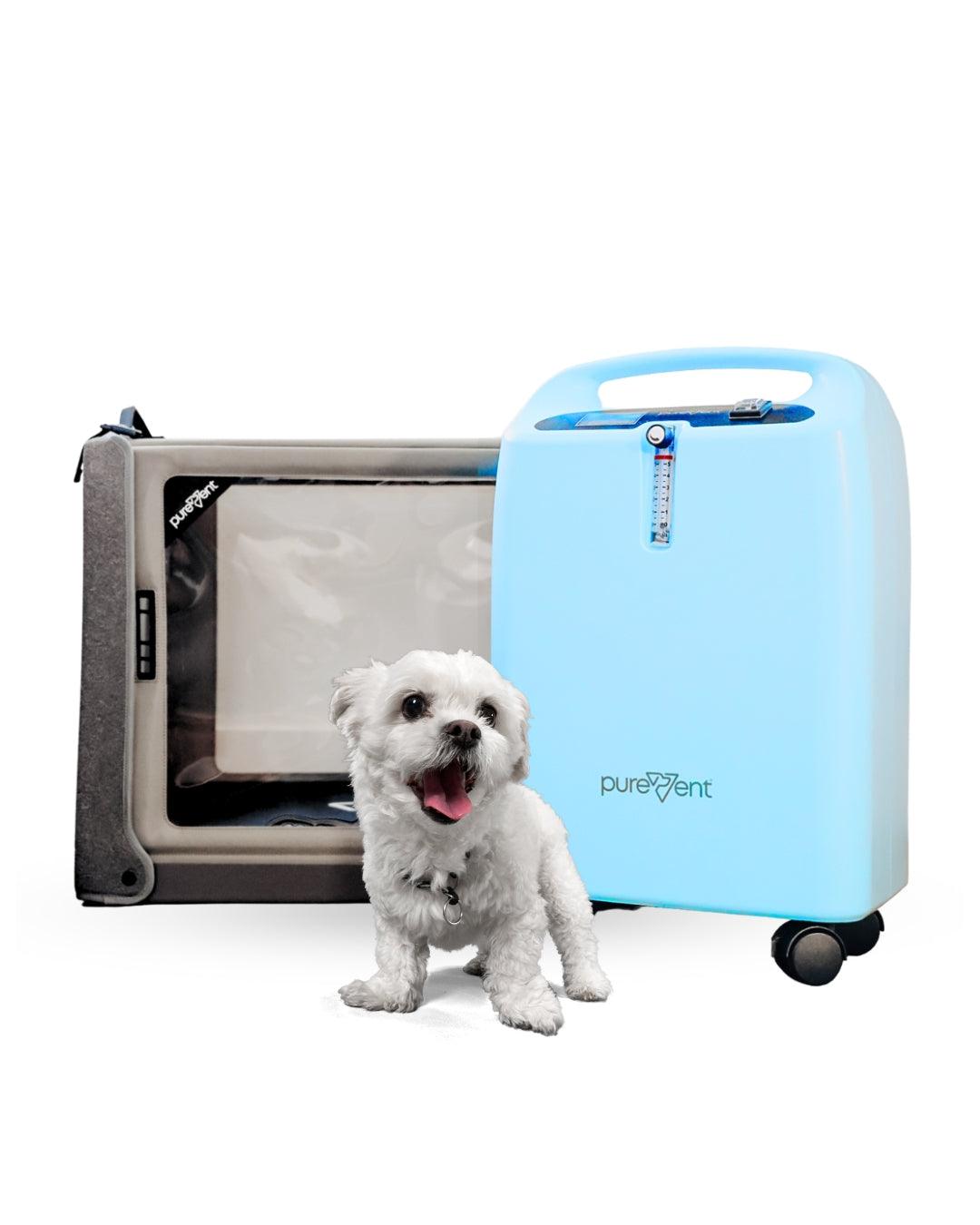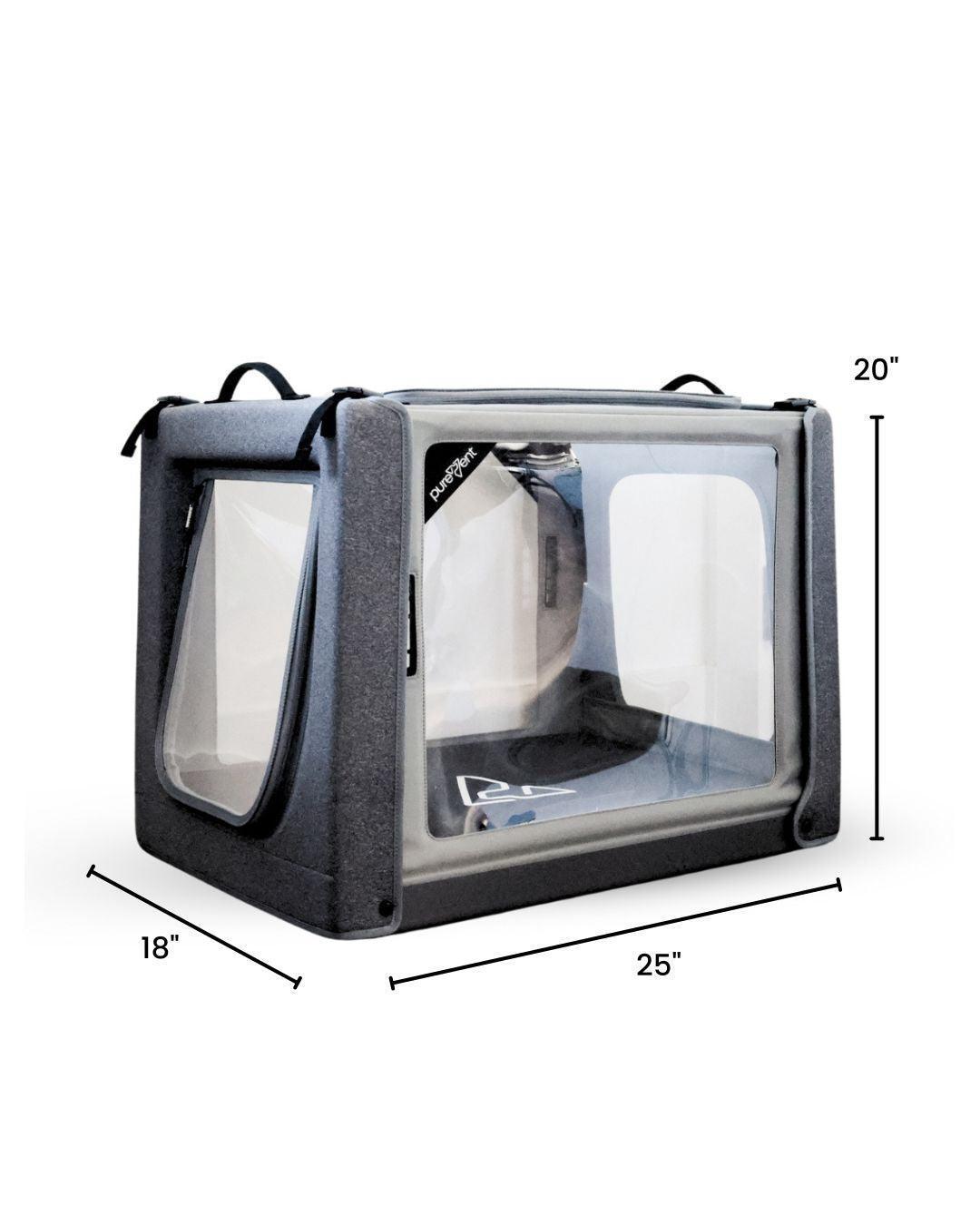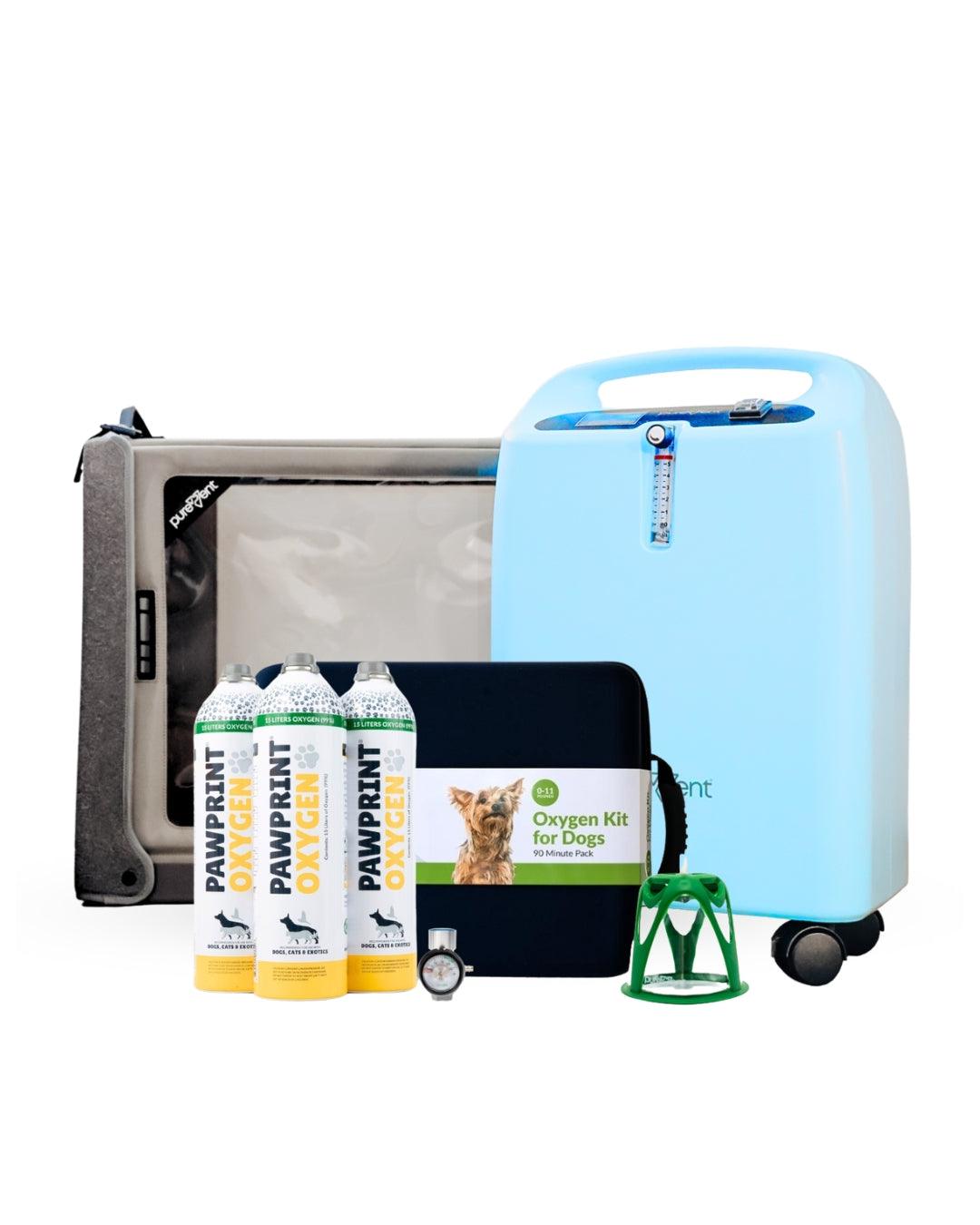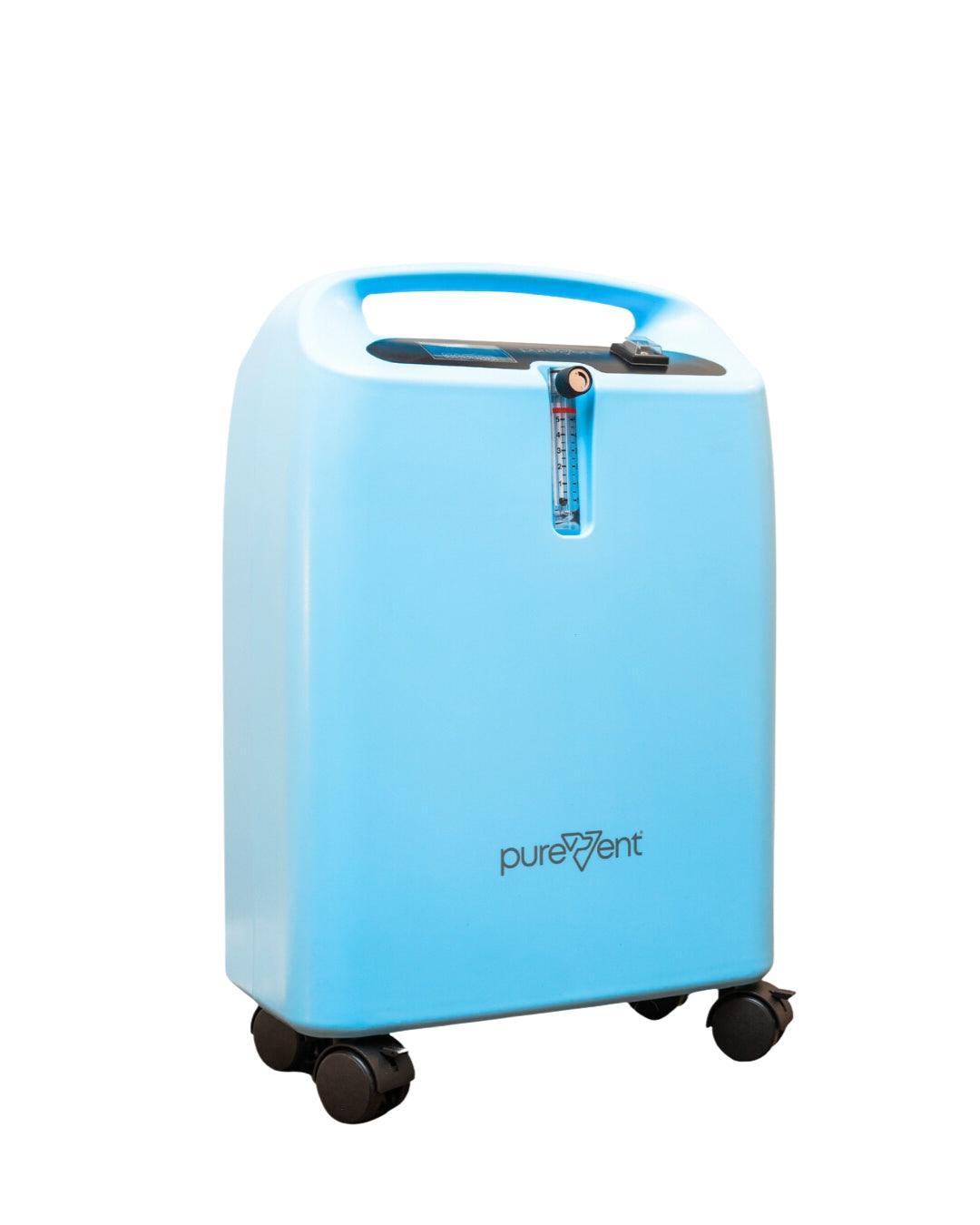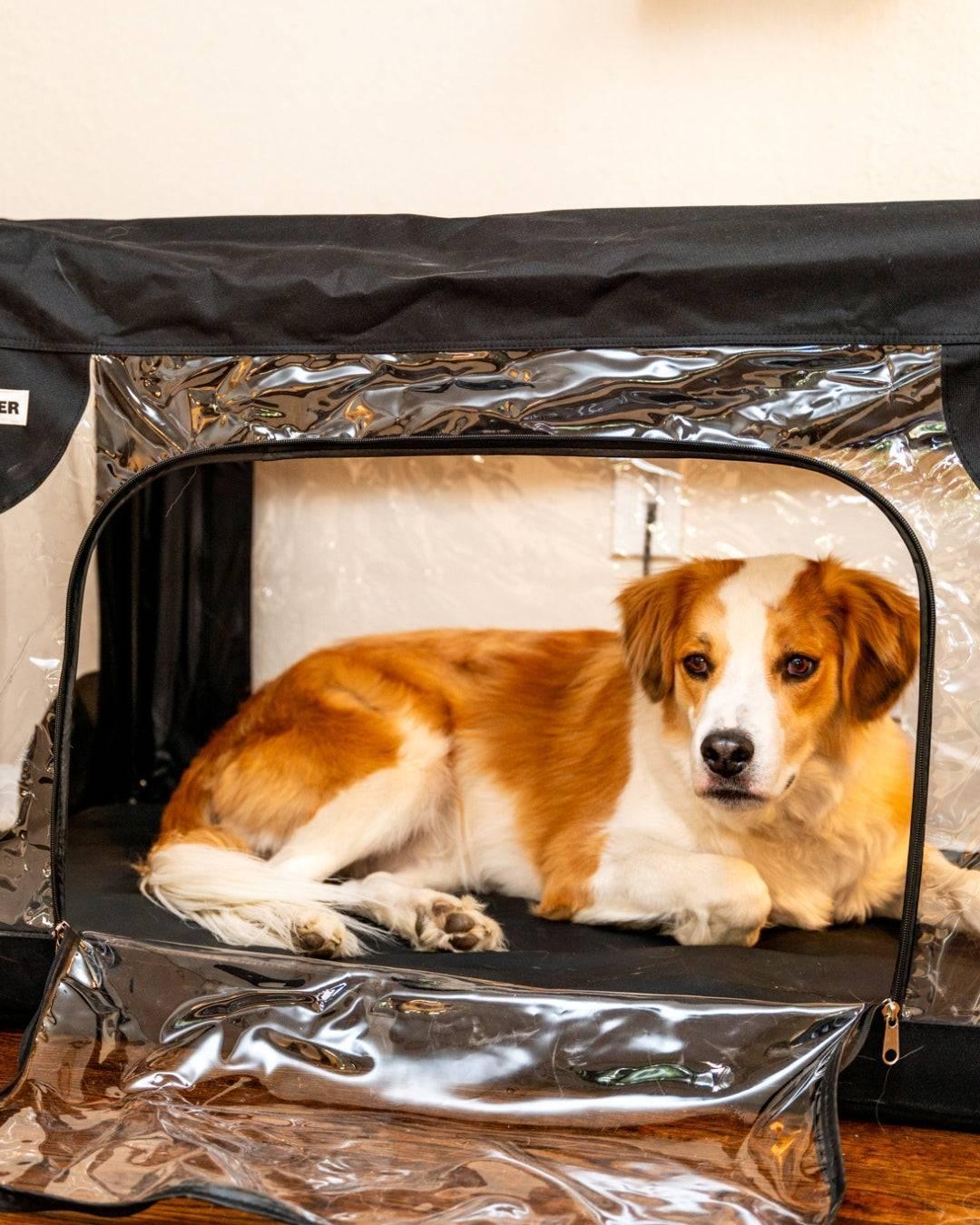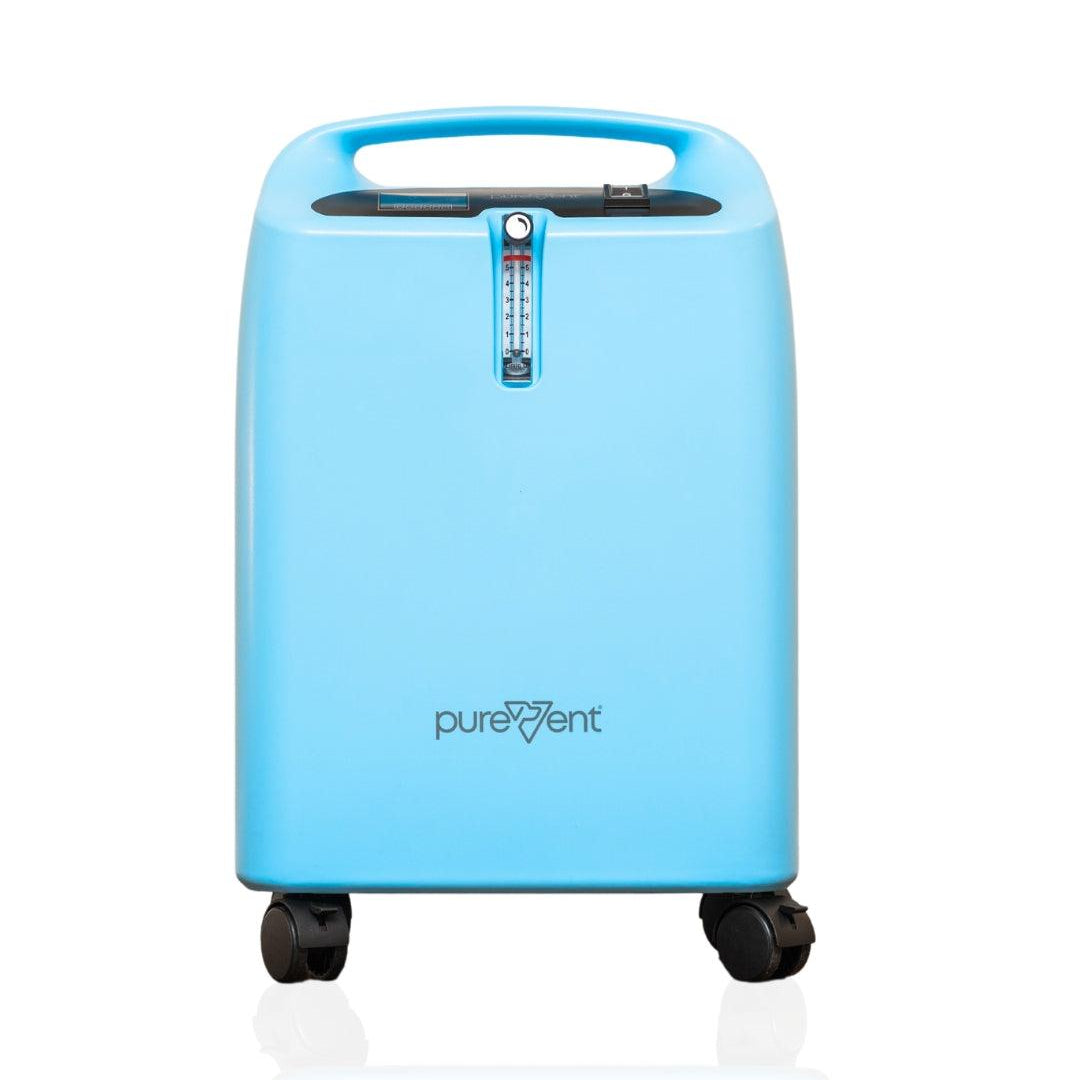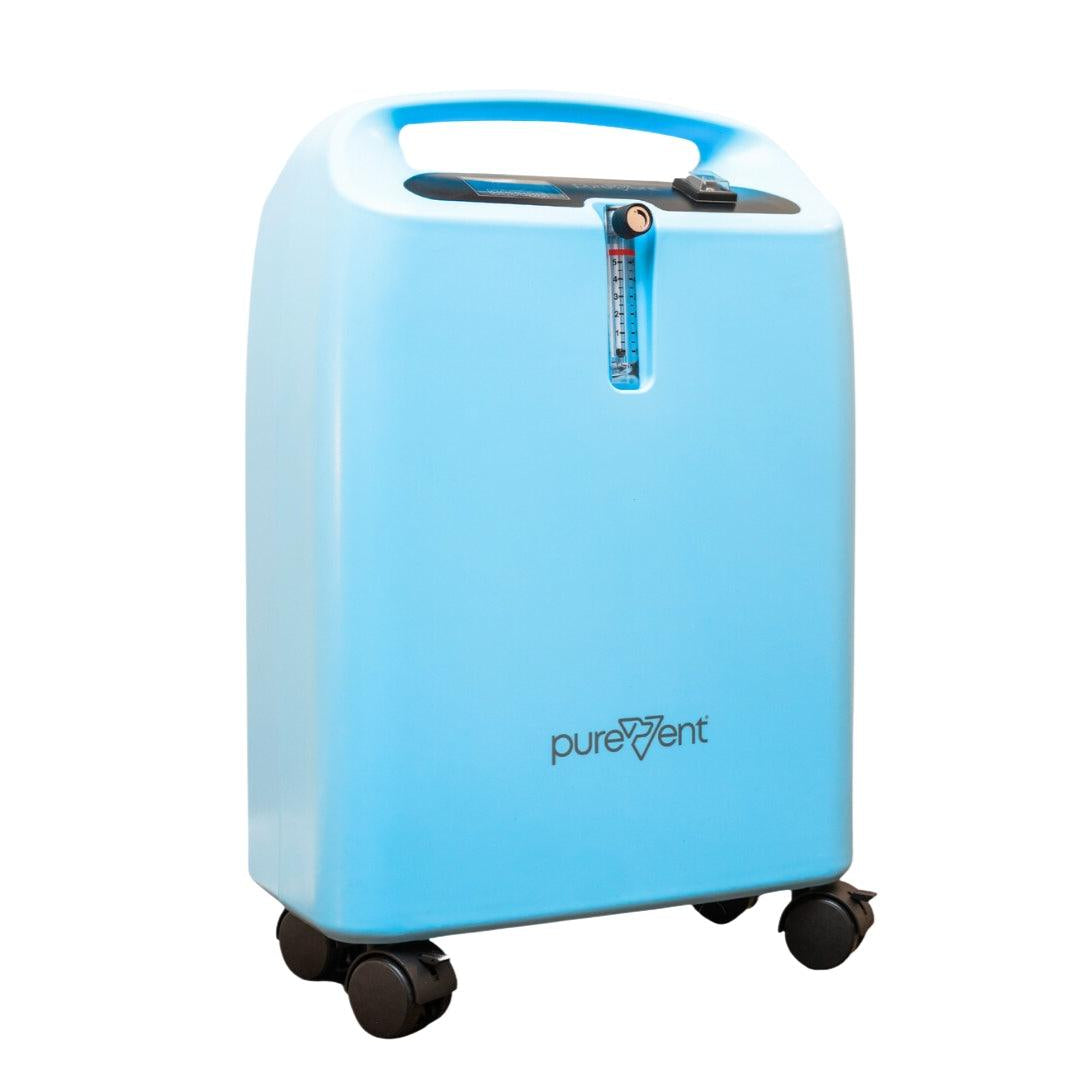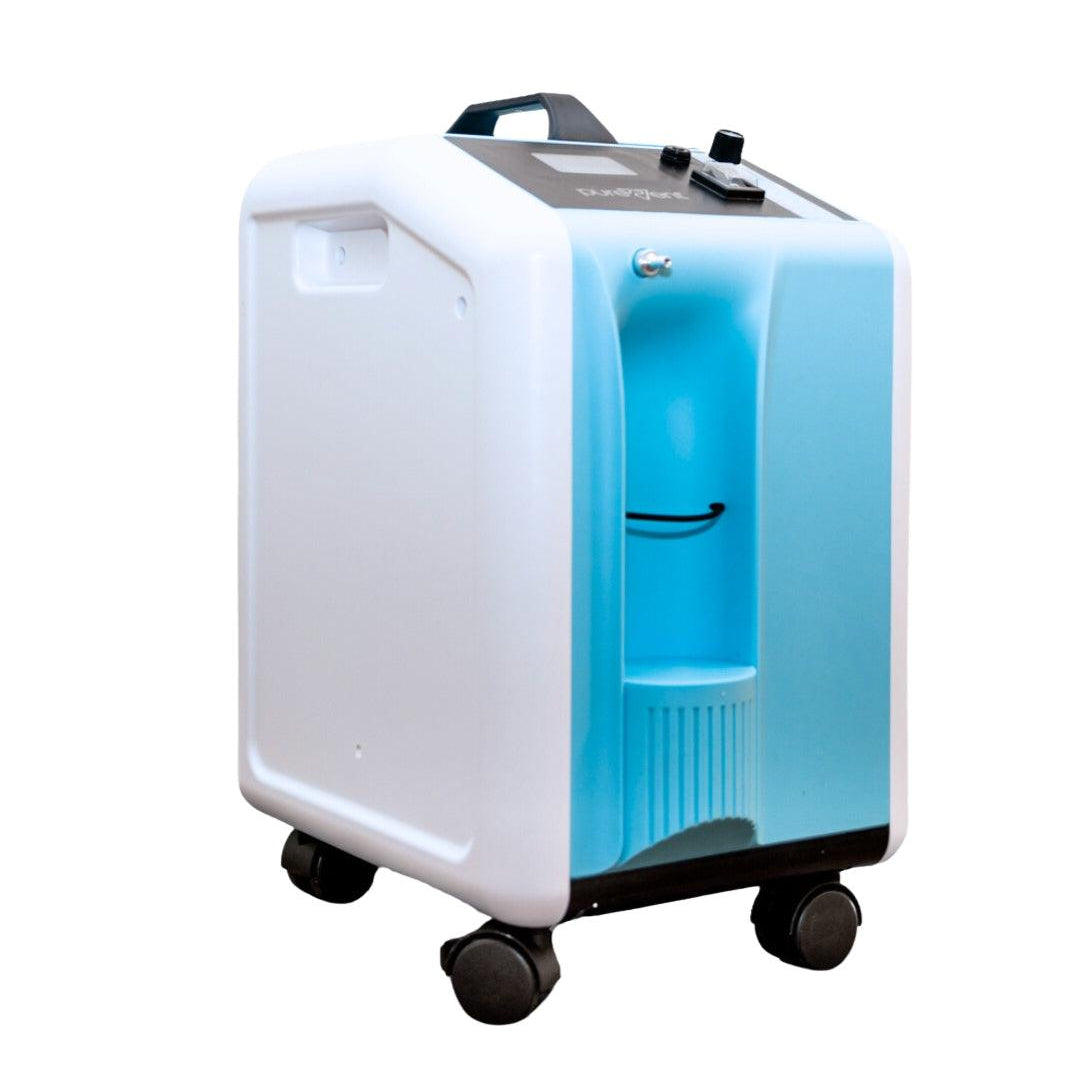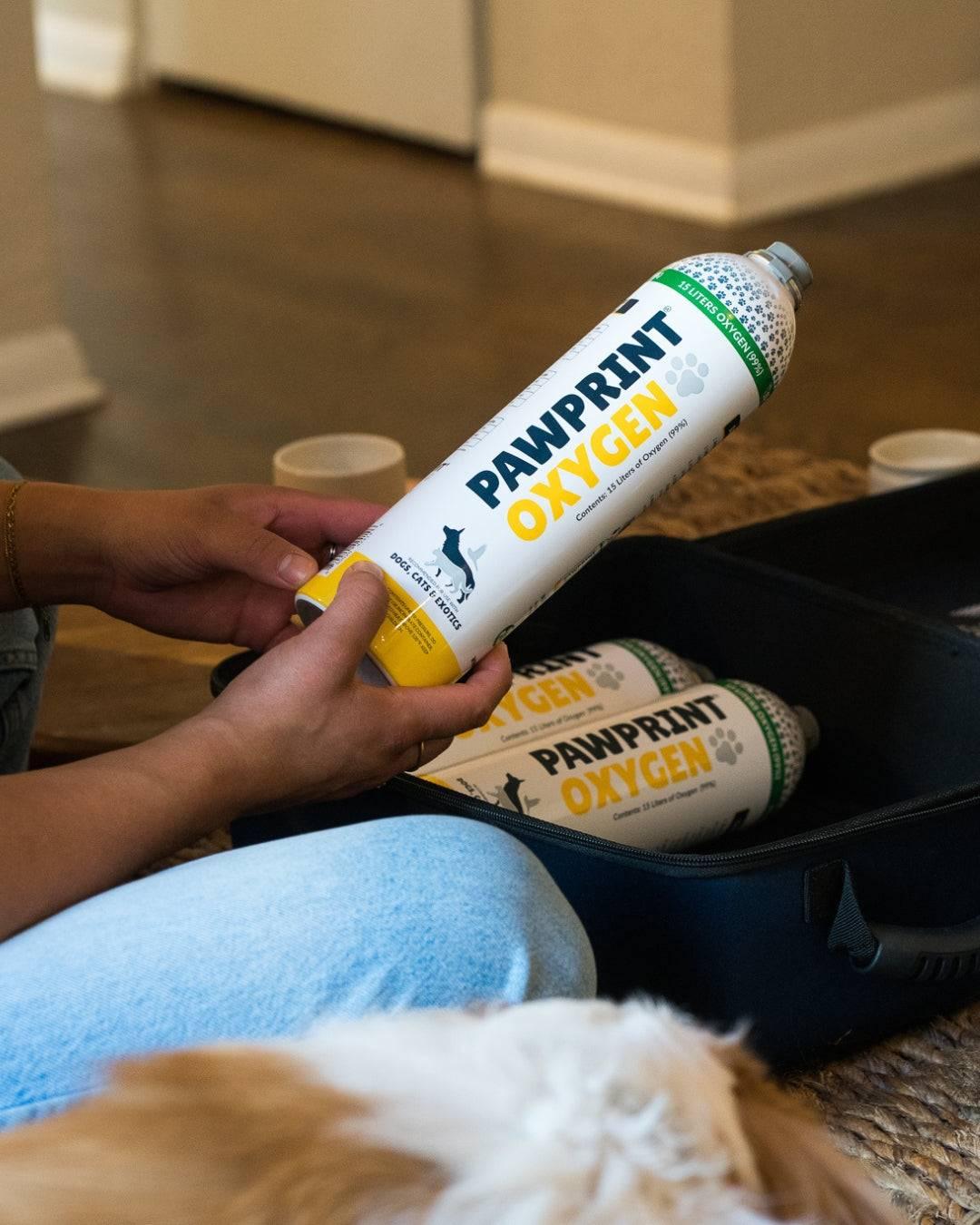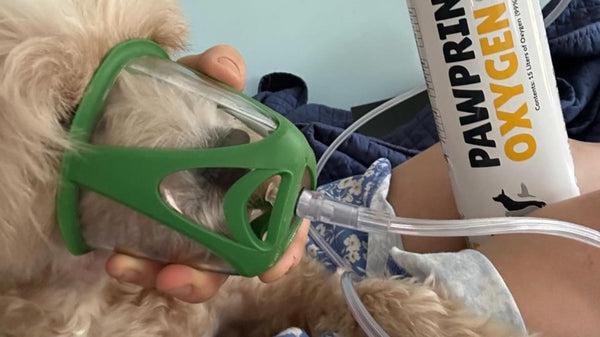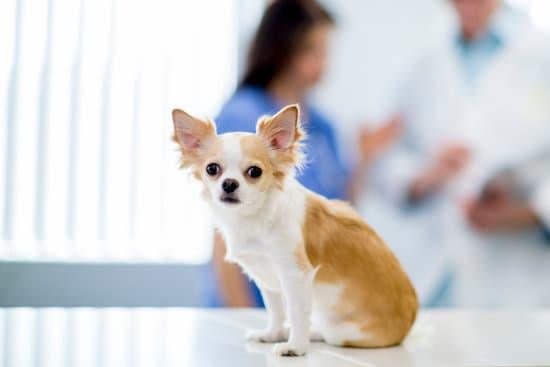Introduction to Pet Oxygen Therapy: The PureVent Pet Oxygen Mask
At Pawprint Oxygen, we understand how critical oxygen therapy can be for pets. Our premier product, the PureVent Pet Oxygen Mask, ensures that your furry friends receive the oxygen they need, whether at home or on the go.
The PureVent Pet Oxygen Mask can be seamlessly integrated with most oxygen delivery systems. Whether using an oxygen concentrator for prolonged therapy or Pawprint Oxygen’s Transport and Rescue system for emergencies, the PureVent technology ensures efficient oxygen administration.
Table of contents
Tips for Acclimating Your Pet to the PureVent Pet Oxygen Mask
While some pets might initially resist, most adapt quickly once they experience the therapeutic benefits of oxygen. In almost all cases, when your pet needs oxygen during respiratory distress, they will not fight the mask.
To help your pet get used to wearing a mask, we recommend using treat-training and positive reinforcement. You can try using your pet's favorite treat, liquid treat, or peanut butter to encourage your pet to accept the pet oxygen mask. By familiarizing your pet in advance, they will be more comfortable wearing it during an emergency situation.
Cleaning and Maintaining Your Pet Oxygen Mask
PureVent Pet Oxygen Masks can be easily cleaned for safe reuse. Maintaining the PureVent Pet Oxygen Mask is simple. Clean it with warm, soapy water, rinse thoroughly, and dry completely to ensure it’s ready for the next use.
Cleaning your pet oxygen mask will not only extend the life span of the mask but create a safe clean environment for your pet.
What conditions can a pet oxygen mask help treat?
A pet oxygen mask can help treat a variety of conditions in dogs and cats, particularly those that affect their ability to breathe properly. These conditions include:
Respiratory Conditions
- Asthma: Common in cats, asthma can cause difficulty breathing, wheezing, and coughing, which oxygen therapy can help alleviate during an attack.
- Pneumonia: For pets with bacterial, viral, or fungal pneumonia, supplemental oxygen can assist in maintaining adequate oxygen levels while their lungs heal.
- Collapsed Trachea: Oxygen therapy can provide relief for pets experiencing airway obstruction caused by tracheal collapse.
- Chronic Obstructive Pulmonary Disease (COPD): Oxygen can help manage flare-ups in pets with chronic respiratory conditions.
- Lung Cancer: Oxygen can improve comfort and oxygenation in pets with compromised lung function due to cancer.
Heart Conditions
- Congestive Heart Failure (CHF): Pets with CHF often suffer from fluid buildup in the lungs, making oxygen therapy crucial to improve oxygenation and ease breathing.
- Pulmonary Hypertension: Oxygen can help reduce stress on the heart and improve oxygen levels in pets with this condition.
Emergency Situations
- Smoke Inhalation: Oxygen therapy is essential for pets exposed to smoke during fires to treat carbon monoxide poisoning and lung irritation.
- Drowning or Near-Drowning: Oxygen therapy can support recovery by improving oxygenation after water aspiration.
- Trauma: Pets with injuries that cause respiratory distress, such as rib fractures or chest trauma, may benefit from supplemental oxygen.
Infectious Diseases
- Feline Infectious Peritonitis (FIP): In cats, the wet form of FIP can cause fluid buildup in the chest, which oxygen therapy can help manage.
- Upper Respiratory Infections: Severe infections can cause breathing difficulties, particularly in brachycephalic (flat-faced) breeds, where oxygen therapy may provide relief.
Neurological Conditions
- Seizures: Pets recovering from seizures may have compromised oxygen levels, and supplemental oxygen can aid in their recovery.
- Head Trauma: Oxygen therapy can help ensure adequate oxygen supply to the brain during recovery.
Chronic Conditions
- Laryngeal Paralysis: Oxygen can be a temporary or supportive treatment for pets with this condition, especially during acute episodes.
- Brachycephalic Obstructive Airway Syndrome (BOAS): Flat-faced breeds often benefit from oxygen during stress, heat exposure, or airway crises.
Post-Surgical Recovery
- Anesthesia Recovery: Oxygen therapy can help pets recovering from surgery or sedation, particularly if they have underlying respiratory or cardiovascular conditions.
Shock or Severe Anemia
- Shock: Pets in shock from blood loss, dehydration, or severe infection can benefit from oxygen therapy to stabilize their condition.
- Severe Anemia: Oxygen masks can assist anemic pets whose bodies struggle to deliver sufficient oxygen to tissues.
By addressing these conditions, pet oxygen masks play a crucial role in emergency care, chronic disease management, and improving quality of life for pets with compromised respiratory function.
What kind of oxygen source do I need for the pet oxygen mask?
The type of oxygen source you hook your oxygen mask to depends on many factors, including the severity of the pet's symptoms, whether you are in your home or using the oxygen for transport, and the duration of use needed. The three most common sources are portable oxygen canisters, oxygen concentrators, and large oxygen tanks.
Portable oxygen canisters are recommended for short-term therapy or for use during transport, as they are light-weight and easy to handle.
An oxygen concentrator is typically recommended for pets that need longer term therapy or higher flow rates than the oxygen canisters can provide. However, since these units need to be plugged into an electrical outlet to function, they are typically used at home or in a veterinary office setting.
Large oxygen tanks are typically what is used on fire trucks and by first responders, and can provide high flow rates when and where the oxygen is needed. However, since the tanks are heavy and need refilled, they are not typically ideal for pet owner use.
What should I do if my pet resists wearing the pet oxygen mask during an emergency?
If your pet resists wearing a pet oxygen mask during an emergency, it’s essential to stay calm and try these strategies to ensure they receive the oxygen they need:
1. Stay Calm and Gentle
- Pets can sense stress, which might heighten their anxiety. Speak to them in a soothing tone and use reassuring body language.
- Avoid forcing the mask onto their face, as this may cause more resistance.
2. Gradual Introduction
- Hold the mask near their face without putting it on right away. Let them sniff and investigate it while you reassure them.
- Slowly move the mask closer, allowing them to get used to the sensation before securing it.
3. Distract with Comfort
- Offer a favorite blanket, toy, or a gentle touch to make the situation less intimidating.
- Try to provide comfort by petting them or holding them in a familiar position.
4. Adjust Your Approach
- Alternative Positioning: Instead of securing the mask tightly, hold it slightly above their nose and mouth to deliver oxygen indirectly.
- Angle the Mask: If the standard position isn’t working, tilt the mask slightly to allow some oxygen flow while they adjust.
5. Use Treats (if possible)
- In non-life-threatening emergencies, use small treats to distract your pet and create a positive association with the mask.
- Offer a treat immediately after each attempt to bring the mask closer to their face.
6. Secure Assistance
- If another person is available, they can help hold or comfort your pet while you handle the oxygen mask.
- For larger pets, you may need help gently restraining them to position the mask effectively.
8. Prioritize Safety
- If your pet is panicking and the mask cannot be used safely, don’t risk injury to yourself or your pet. Instead, try to deliver oxygen indirectly using the end of the oxygen tubing or by holding the mask near their face.
9. Practice Ahead of Time
- To prepare for emergencies, familiarize your pet with the oxygen mask before it’s urgently needed. Practice placing the mask on their face calmly and reward them for tolerating it.
10. Consult a Veterinarian
- After the emergency, consult your vet for additional strategies to help your pet adapt to oxygen therapy for future scenarios.
By remaining calm and patient, you can help your pet feel more comfortable during a stressful situation and ensure they get the oxygen they need.

Mitigating Carbon Dioxide Rebreathing Using PureVent
It is very important to use a pet oxygen mask that has proper venting when administering oxygen therapy to a cat, dog, and our other furry friends.
It is crucial to mitigate CO2 buildup while a pet is using an oxygen mask to prevent hypercapnia, a condition characterized by elevated levels of carbon dioxide in the blood. When a pet inhales pure oxygen, it is vital that exhaled CO2 is efficiently removed from the pet oxygen mask and surrounding air to ensure proper respiratory function. Failure to adequately ventilate CO2 can lead to respiratory acidosis, where the blood becomes too acidic, impairing the pet's normal physiological processes and potentially leading to symptoms such as confusion, lethargy, and increased respiratory rate. Prolonged hypercapnia can exacerbate respiratory distress, reduce the effectiveness of oxygen therapy, and can even be life-threatening. Therefore, ensuring proper ventilation and CO2 clearance while using a pet oxygen mask is essential for maintaining the pet's respiratory health and overall well-being.
Our tri-vent design on the PureVent Pet Oxygen Mask prevents harmful CO2 buildup, ensuring your pet's safety and the efficacy of the treatment using oxygen.
For more information about our products and how they can help your pet, visit Pawprint Oxygen .
Fire Departments Choice for Pet Oxygen Masks
The PureVent Pet Oxygen Mask provides life-saving oxygen to animals during respiratory distress and emergency situations. Lightweight and ergonomic, the PureVent mask is easy to hold and administer Oxygen to your pet. The transparent construction of the mask ensures that pets feel comfortable and safe while providing optimal visibility. The PureVent Pet Oxygen Mask is a must-have for Pet Parents, Animal Hospitals, Veterinarians, and Fire Departments.

Pawprint Oxygen's pet oxygen masks are the choice of over 3,000 fire departments across the United States. Our pet oxygen masks can be easily connected to any oxygen source that fire fighters have on the fire trucks or with their oxygen equipment. Having fire departments equipped with pet oxygen masks is the first time pet's have had specialized equipment to help them in an emergency situation.
Contact your local fire department to make sure that they are equipped with PureVent Pet Oxygen Masks. Many fire departments get their masks through donations from community members just like you! Because they often get left at the scene of the fire to provide continued care to pets in need, fire departments often need replacement masks, too.
You can donate a mask set to your local fire department to make sure they are prepared to save the furry friends in our local communities.
We encourage all pet owners to consult with their veterinarians about the best oxygen therapy options for their pets and consider donating pet oxygen masks to local fire departments and rescue organizations. This small but impactful contribution can help save countless animal lives in our communities.
By being informed about pet oxygen masks, pet owners can better prepare for emergencies, ensuring they have the right equipment and knowledge to act quickly. Whether it's aiding a pet suffering from smoke inhalation, managing a chronic respiratory condition, or providing immediate support during a sudden health crisis, pet oxygen masks can be a crucial component of your pet care tool kit.





